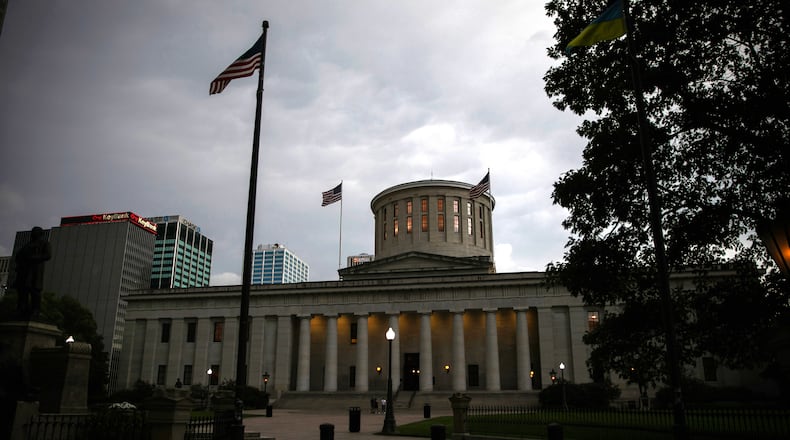House Bill 339 applies to schools like Bethel Baptist School in West Carrollton, which had 46 students in the 2021-2022 school year, according to the National Center for Education Statistics.
Rep. Gary Click, who proposed the bill, said in testimony on Jan. 16 that the bill would cover about 70 schools in the state and about 3,500 students. The bill specifies the savings account would be 90% of the statewide average base cost per pupil in Ohio, or roughly $7,418 under current law. If passed, it would go into effect in the 2025-2026 school year.
“The Educational Savings Accounts funds the families, not the schools,” Click said. “Families may then direct those restricted resources to the school.”
Greg Lawson, research fellow at The Buckeye Institute, a conservative-leaning think tank, said ESAs can be used to pay for not just tuition, but items like books, tutors and online classes.
Click said the bill was like a miniature “Backpack Bill,” referring to a proposed bill that would have given money to every student in Ohio and allowed the money to move with the student from school to school.
Click said the point of the program was to prevent families from having to pay for school twice.
“This means that their parents continue to pay twice for education was through taxation and second time through tuition,” he said.
Click said the bill would not apply to homeschooled families, though Click said he thought there should be a separate provision for those choosing to homeschool their kids.
Click said there would also be some reporting requirements from families.
“I don’t think that we should be buying grand pianos and going to Disney World and things like that on the taxpayers’ dime,” he said, referring to reports that a similar program in Florida had paid for passes to the theme park.
The proposal has gotten some pushback from representatives who have already criticized the idea of school vouchers.
“We are doing a fiscally irresponsible thing already, in my humble opinion on the universal voucher program, but this would just make that even worse,” said Rep. Jessica E. Miranda, D-Forest Park. “I mean, we’d be costing ourselves more money.”
Others proposed more scrutiny for the schools that take these state dollars. Rep. Don Jones, R-Freeport, asked Click if he would be open to rating all schools against each other.
“Would you think that maybe everybody would be in favor if we do this, that we start having a report card for all schools, rather than just those public schools and that way we can see who is doing a better job amongst everyone?” Jones said.
Click said he would be interested in that but said he couldn’t speak for other proponents of the bill.
“Personally, myself and frankly, I think transparency is a good thing,” Click said.
Private school vouchers were expanded this past summer so anyone in the state can qualify for at least 10% of the private school voucher amount. Families who make up to 450% of the federal poverty line, or about $135,000 for a family of four, can receive a full voucher (EdChoice Scholarship) for their child.
A high school voucher is worth up to $8,407, and kindergarten through eighth-grade students can get up to $6,165.
In September, the Ohio Department of Education reported it had received 70,487 applications for EdChoice vouchers, a 165% increase from the 26,578 applications it received last school year.
About the Author

